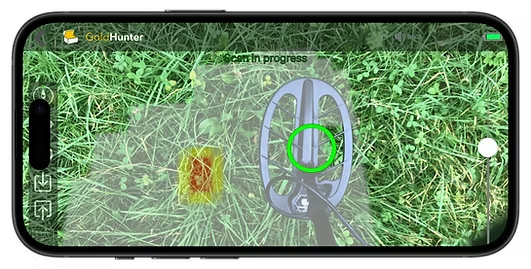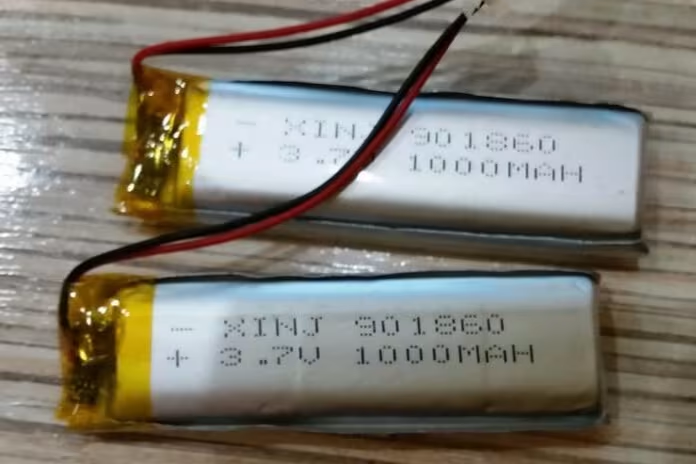In one of the most recent archaeological searches near the Roman settlement, I have watched a researcher raise her tablet and swing it over the ground in time with her metal detector. On the screen, a detailed 3D map emerged in real time, showing not just the location of detected objects but their probable depth, size, and composition. This is something that would have sounded like science fiction twenty years ago. Today, the integration of augmented reality with metal detection transforms how we know what’s lying beneath our feet. The Challenge of Interpretation
Traditional metal detection has always had what I call the “black box problem.” When a detector signals the presence of metal, operators must interpret-in through audio tones, simple numeric values, or basic displays what they have found. It’s like trying to identify an object in a dark room using the sense of touch alone: possible given enough experience, but far from ideal.
This is not just a theoretical limitation. In professional applications, ranging from archaeology to utility location, not being able to see the detected object results in inefficient excavation, possible damage to artifacts or infrastructure, and many hours wasted digging up false positives. Better visualization is one of the driving needs that have pushed the development of AR-enhanced detection systems.
Revealing the Invisible
Augmented reality technology superimposes digital information onto the view of the physical world and thus turns into a powerful tool in understanding the signals of metal detectors. Modern AR-enhanced detection systems integrate various streams of data, including electromagnetic signals, depth calculations, conductivity measures, and spatial positioning, to create immediate 3D visualizations of buried objects.
Imagine being able to “see” the exact path, depth, and composition of a buried pipe without breaking ground, or being able to visualize the distribution of artifacts across an archaeological site as one surveys. These are not abstract capabilities, but are in practice today, changing how professionals approach the work of detection.
Technical Implementation: How it Works
To create effective AR visualizations for metal detection, several challenging technical issues need to be resolved. The system has to be able to track the position and orientation of the detector in space with high accuracy, precisely map detected signals to physical places, and render visualizations informative yet intuitive.
Modern systems do this all through combinations of technologies: high-precision GPS or local positioning systems track spatial coordinates, while inertial measurement units monitor the detector’s orientation. Advanced signal processing algorithms transform raw detector data into meaningful object characteristics. All of these feed into real-time 3-D rendering engines creating the augmented display.
Real-World Applications

The advent of AR-enhanced metal detection makes wide and varied improvements in several fields:
In utility location, operators can now visualize whole networks of buried infrastructure, making maintenance and excavations much safer and more efficient. Recently, I watched a utility crew use AR visualization to trace a tricky intersection of water, gas, and electrical lines; what might have taken days of very careful probing and digging was mapped in hours with minimal disturbance to the ground.
Archaeological projects are using AR systems to create detailed, layered maps of sites before the first dig. That would permit researchers to better plan their digs and find documentation with an unprecedented degree of precision. Technology has proved particularly valuable in urban archaeology, where multiple historical layers often overlap in complex ways.
Security screening also benefits from AR integration. Modern screening systems can offer intuitive 3D visualizations of detected objects for security personnel to more easily distinguish real threats from harmless ones. It cuts down on false alarms.
Training and Expertise

One of the most promising usages of AR in metal detection is in training and the development of skills. Traditional metal detection requires a long experience to interpret the signals effectively. AR systems can shorten this learning curve by providing some kind of visual feedback that helps the novice operators understand exactly what they are detecting.
I’ve seen this in training when new operators, using AR-enhanced systems, intuitively understand in very short order how various objects will appear in the response of their detector. What might have taken them many months or even years previously to learn now can be grasped in weeks.
Look Ahead: The Next Wave of Innovation
While AR technology is still in its development stage, newer possibilities are opening up. Advanced machine learning algorithms increase the precision of object classification. Improved visualization techniques make the AR displays more intuitive and informative. Integration with other sensing technologies provides even more valuable data for visualization.
Perhaps most exciting, though, is the development of collaborative AR systems that let multiple operators share a common visualization space. Just imagine a team of archaeologists all contributing to and viewing the same real-time site map or utility crews sharing detailed underground infrastructure visualizations across multiple work sites.
Some detectors are already implementing this technology effectively. Take for instance the Treasure Hunter GoldHunter, which utilizes the user’s smartphone as a display to show exactly where the object is and the rough size of it as well.

Conclusion
Augmented reality integrated with metal detection represents a whole conceptual change in how we approach such a challenge: the finding and identification of a buried object. It is not only about making the job easier, but it is about providing new ways of understanding and interacting with the hidden world beneath our feet.
Having watched this technology go from concept to realization, I was continuously flabbergasted with what it could do. Yet, we remain at the very top of the iceberg of what is possible. With each passing day, AR technology will continue to get better: with new applications mushrooming all over, so does our future where the invisible gets to be seen and the hidden is revealed.

My name is Paul and I am the founder of Detector For Metal, a dedicated resource for metal detecting enthusiasts seeking to uncover historical treasures and connect with the past using the latest technology. As a stay-at-home dad and family man, I’ve found metal detecting to be the perfect hobby that combines family adventure with historical learnings for the whole family.
As a father, I’m deeply committed to passing on this hobby to the next generation of detectorists, starting with my own children. I share advice on everything from metal detecting with kids to exploring the top 10 metal detecting sites you never thought about. My methodical approach to the hobby goes beyond the thrill of discovery—it’s about creating family traditions while preserving history and sharing the stories of those who came before us.


